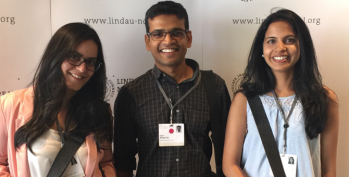News from the Institute

The genetic information in our cells is at constant risk of damage, and sophisticated DNA repair mechanisms have evolved to maintain genome stability. Whilst many of the mechanisms have been studied in molecular detail, their regulation and concerted action is still unclear. A new collaborative research center (CRC 1361) on this topic has now received funding from the German Research Foundation (DFG).
... (read more)
As announced by the Max Planck Institute (MPI) of Biophysics today, IBC2 Director Ivan Dikic has been appointed as Fellow of the Max Planck Society and will start his 5-year-term immediately, including supervision of a small working group at the Frankfurt-based Institute. The Max Planck Fellow Programme has been set up to strengthen cooperation between outstanding university professors and Max Planck Society researchers.

The European Research Council (ERC) awarded one of its prestigious Starting Grants to Emmy Noether group leader Christian Münch. The grant provides € 1.44 Mio to carry out a challenging project dubbed ‘mitoUPR’, in which Christian plans to unravel the impact of the mitochondrial unfolded protein response (UPRmt) on the cellular environment in mammalian cells. The UPRmt is a poorly understood mitochondrial stress response that activates upon protein misfolding in mitochondria.
... (read more)
Once every year, around 30 Nobel Laureates convene at Lindau to meet more than 500 young scientists from all over the world. This year, Hadir Marei, Sissy Kalayil and Sagar Bhogaraju, three postdoctoral scientists from IBC2, have been selected for the 68th Lindau Nobel Laureate Meeting, dedicated to Physiology and Medicine.
“It was an unforgettable experience exchanging with scientists from all parts of the world, different generations and backgrounds and having the chances to meeting so many Nobel Laureates at one place”, was the résumé of all three researchers.
... (read more)
Antimicrobial resistance (AMR) is a major medical problem worldwide, impacting both human health and economic well-being. Scientific efforts are underway to achieve better control of infections.
One promising approach is to limit damage to host cells and tissues in the course of a bacterial infection by blocking the microbial processes that cause such damage. In today’s online issue of Nature, the laboratory of IBC2 Director Ivan Dikic reports a breakthrough substantiating the feasibility of this novel strategy.
... (read more)